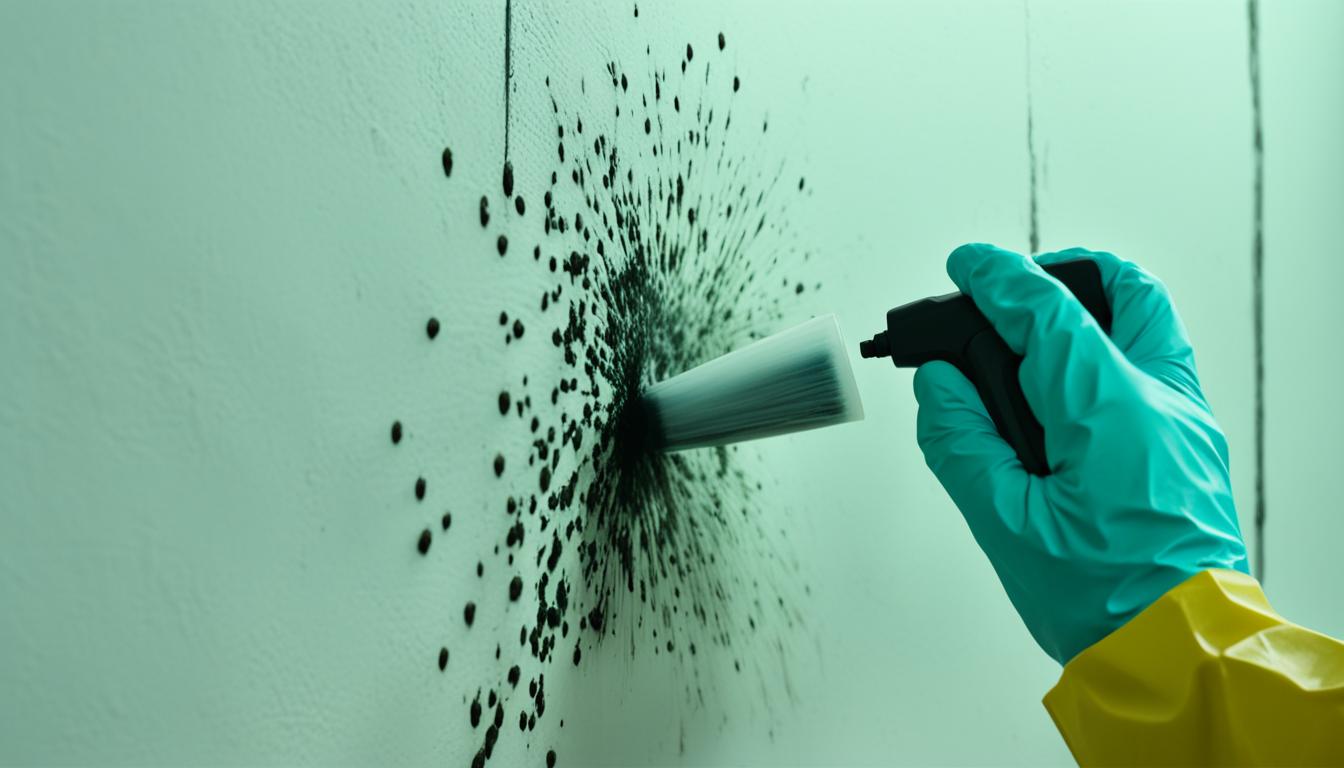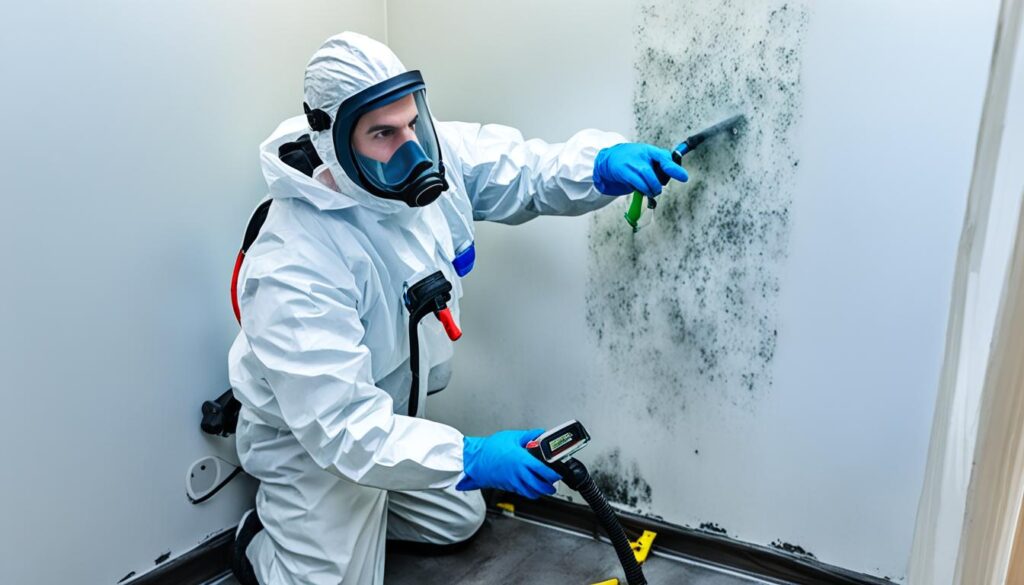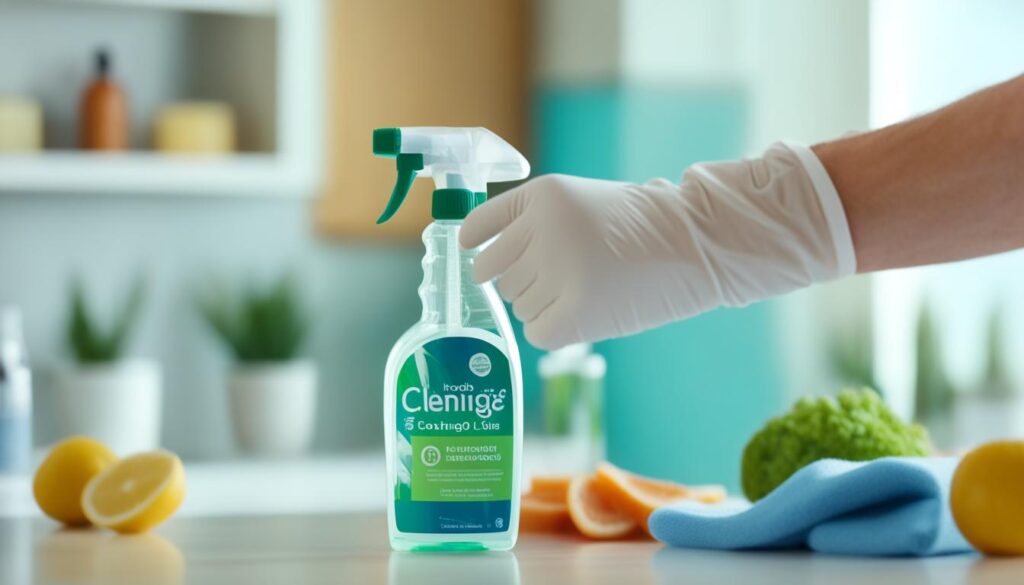
Guide to Effective Mold Remediation Techniques
When it comes to mold infestations, quick and effective action is crucial to prevent further damage and ensure a safe living environment. In this comprehensive guide, we will explore the most effective mold remediation techniques, highlighting the importance of certified mold remediation specialists and best practices for mold removal.
Mold removal methods vary depending on the extent of the mold growth and the affected surfaces. Whether you’re dealing with a small area or a large-scale mold problem, understanding the right techniques is essential to achieve successful remediation.
Certified mold remediation specialists have the expertise and experience to handle mold infestations effectively. These professionals are trained to identify the type of mold, assess the extent of the damage, and deploy appropriate remediation techniques. Their knowledge ensures a thorough and safe mold removal process.
Implementing best practices for mold removal is crucial for preventing future mold growth. Understanding the mold remediation process, from containment to cleaning and disposal, is essential for a successful outcome. By following industry guidelines and utilizing proper protective equipment, you can mitigate health risks and ensure a comprehensive cleanup.
As you navigate the challenges of mold remediation, it’s important to consider the unique factors of your situation. Different mold species and levels of contamination may require specific techniques and precautions. By seeking professional guidance and understanding best practices, you can effectively address mold problems and create a healthier living environment for you and your loved ones.
- Educate yourself on the different mold removal methods to address the specific needs of your situation.
- Hiring certified mold remediation specialists ensures effective and safe mold removal.
- Follow best practices for mold removal, including understanding the remediation process and utilizing proper protective equipment.
- Consider the unique factors of your mold infestation to determine the most appropriate techniques and precautions.
- Regular maintenance and moisture control are essential to prevent future mold growth.
Understanding the Mold Remediation Process
In this section, we will provide a comprehensive understanding of the mold remediation process. It is vital to have a clear grasp of this process to ensure effective mold removal and create a safe living environment. Professional mold remediation services offer expertise and experience in dealing with mold issues efficiently.
The Importance of Professional Mold Remediation Services
When it comes to mold remediation, it is advisable to seek the assistance of certified professionals. Professional mold remediation specialists are equipped with the knowledge, skills, and tools necessary to handle mold infestations effectively. They follow industry standards and employ safe mold remediation strategies to safeguard your health and ensure thorough mold removal.

-“Hiring professional mold remediation services is crucial to ensure the complete removal of mold from your property and prevent any recurring issues.” – John Smith, Certified Mold Remediation Specialist
Safe Mold Remediation Strategies
Safe mold remediation strategies are essential to minimize exposure to mold spores and prevent cross-contamination. These strategies include:
- Isolating contaminated areas to prevent the spread of mold spores
- Wearing proper personal protective equipment, such as gloves, masks, and goggles
- Using HEPA-filtered air scrubbers and vacuums to remove mold particles
- Applying antimicrobial treatments to inhibit future mold growth
- Implementing proper moisture control measures to prevent mold reoccurrences
By employing these safe mold remediation strategies, you can effectively manage mold issues and create a healthier living environment for you and your loved ones.
DIY Mold Removal Tips and Best Practices
For those who prefer to handle mold issues on their own, here are some DIY mold removal tips and best practices to ensure a thorough and safe process:
- Assess the affected areas: Start by identifying the extent of the mold infestation. Check for visible signs of mold, such as discoloration or a musty odor. Pay attention to areas with high moisture levels, such as bathrooms, kitchens, and basements.
- Gather the necessary equipment: Before beginning the mold removal process, make sure you have the right tools and protective gear. This may include gloves, goggles, a mask, plastic sheeting, a scrub brush, and a mold-specific cleaning solution.
- Contain the mold: To prevent the spread of mold spores, create a containment area using plastic sheeting and tape. This will help protect other parts of your home from cross-contamination.
- Remove any affected materials: If mold has grown on porous materials such as drywall, carpeting, or insulation, it is best to remove and replace them. These materials can be difficult to clean thoroughly, and mold can easily regrow if not completely eliminated.
- Clean non-porous surfaces: Use a mold-specific cleaning solution or a mixture of water and detergent to clean non-porous surfaces. Scrub the affected area thoroughly and ensure that all visible mold is removed.
- Dry the area: After cleaning, it is essential to thoroughly dry the area to prevent further mold growth. Use fans, dehumidifiers, or open windows to increase airflow and reduce moisture levels.
- Monitor for recurrence: Keep an eye on the treated area to ensure that mold does not reappear. If you notice any signs of mold growth or persistent moisture issues, it may be necessary to consult a professional mold remediation specialist.
Following these DIY mold removal tips and best practices will help you effectively address mold issues in your home. However, it’s important to note that more severe mold problems or extensive infestations may require the expertise of certified mold remediation specialists. It’s always better to prioritize your health and safety by seeking professional assistance when needed.

Conclusion
In conclusion, effective mold remediation techniques are crucial for ensuring a safe and healthy living environment. Whether you choose to hire certified mold remediation specialists or follow DIY methods, understanding the mold remediation process and implementing best practices is key.
When faced with mold issues, it is important to consider professional mold remediation services, especially for more complex problems. Certified mold remediation specialists have the knowledge and expertise to thoroughly assess and address mold infestations, providing you with peace of mind.
Regardless of the approach you take, it is essential to prioritize safe mold remediation strategies. This includes wearing appropriate protective gear, such as gloves and masks, and using effective cleaning solutions. Proper ventilation and moisture control are also important to prevent future mold growth.
For reliable mold assessment services, trust Fix Mold Miami. Our team of certified specialists utilizes effective mold remediation techniques and follows industry best practices to ensure a thorough and safe mold removal process. Contact us at 305-465-6653 for professional mold remediation services in Miami.




